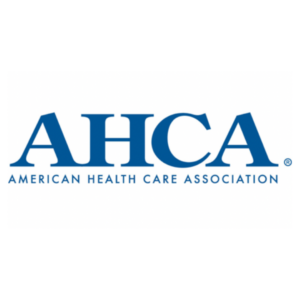AL providers consider negative effects of community-based rules
The U.S. Department of Health and Human Services (HHS) late in April finalized a new rule that HHS Secretary Kathleen Sebelius said would provide new opportunities in Medicaid and Medicare for people to more easily receive care and services in their communities rather than being admitted to a hospital or nursing home.
It is the “Community First Choice” rule, which provides states choosing to participate a six percent increase in federal Medicaid matching funds for providing community-based attendant services and support to beneficiaries who would otherwise be confined to a nursing home or other institution.
In these days when many states are slashing Medicaid funding to help balance their budgets, the incentive of receiving increased funding from the federal government may well be attractive.
However, cautions the National Center for Assisted Living (NCAL), the program could have the opposite effect, warning that LTC options for Medicaid beneficiaries will be “significantly” reduced while potentially increasing costs to the federal and state governments.
“If these proposed rules are not changed, they would force the majority of the more than 139,000 Medicaid beneficiaries currently living in assisted living communities to be transferred to a nursing home or other institutional setting,” NCAL warned in testimony submitted to the Senate Special Committee on Aging for a hearing held April 18.
Two rules are involved—The Community First Choice regulation, originally proposed Feb. 25, 2011, and the Medicaid Program: Home and Community-Based Services Waivers regulation, proposed April 15, 2011.
According to NCAL, both proposed rules would disqualify a community-based provider, such as assisted living or a group home, from participating in Medicaid because they are on or near a property containing an institutional setting.
“Many seniors choose to live in settings offering multiple levels of care (e.g., continuing care retirement communities), and states have chosen to allow Medicaid to pay for these,” NCAL pointed out. “Especially at a time when the senior population is growing rapidly, CMS should not restrict the options available to seniors and the states.”
Also of concern, NCAL said, is a requirement that residents have a lease. NCAL explained that in most states assisted living communities use resident agreements because they offer a combination of services and housing.
“This and the other requirements, such as having lockable doors and forbidding settings targeted to a particular diagnosis, could disqualify assisted living communities in several states from delivering care for the most vulnerable seniors, particularly those with Alzheimer’s disease,” NCAL said.
While NCAL agreed with the goal of integrating Medicaid beneficiaries into the larger community and having person-centered care, its statement cautioned that the regulation could have the opposite effect.
“Many of these older Medicaid beneficiaries do not have the option of returning to their home because their needs can no longer be met through home healthcare alone,” NCAL explained. “Others may no longer have a home to return to. Denying access to assisted living and group home settings would force older low-income residents into nursing homes and other institutional settings because in most cases, there would be no other options.”
NCAL said any definition of home and community based settings (HCB) should include all types of assisted living communities participating in Medicaid. “NCAL agrees that care in HCB settings should be resident-centered and continues to work with federal agencies to operationalize that goal in a way that does not arbitrarily restrict choice.
The proposed rule drew 1,600 negative comments and as a result, HHS on May 3 published some modifications designed to address some of the concerns expressed, with a July 2 deadline for response. However, Karl Pozer, senior policy director at NCAL, said that while some improvements were made, NCAL is still concerned about potential restrictions in the HCB definition.
Meanwhile, Mark Parkinson, president & CEO of the American Health Care Association (AHCA) and NCAL, noted that many states are now reporting improved state tax collections—up $62 billion for 2011—and that previous cuts to Medicaid should be restored.
Parkinson said continued cuts to Medicaid by many states underfunded nursing facilities by $6.3 billion in 2011. “As revenues returns, states should consider rolling back many of these Medicaid cuts and restoring the level of care our nation’s seniors and individuals with disabilities deserve,” Parkinson said.
The budget crisis could well worsen by year’s end because of the automatic sequestration of funds required under the Budget Control Act. According to a study prepared for the Alliance for Quality Nursing Home Care by Avalere Health, the impact nationwide will reach $782.3 million.
Given the political climate in Washington and the upcoming November elections, insiders do not expect those cuts to be reversed—at least not until a lame duck session following the election. Then, lawmakers—including those who have just been defeated – will most likely consider changes to the sequestration law. The outcome of that largely will depend upon the results of the election.
Bob Gatty has covered governmental developments for the trade and business press for more than 30 years. He is founder and president of G-Net Strategic Communications, Sykesville, Md.

Robert Gatty has more than 40 years of experience in journalism, politics and business communications and is the founder and president of G-Net Strategic Communications based in Myrtle Beach, South Carolina. He can be reached at bob@gattyedits.com.
Related Articles
Topics: Articles , Executive Leadership , Medicare/Medicaid










